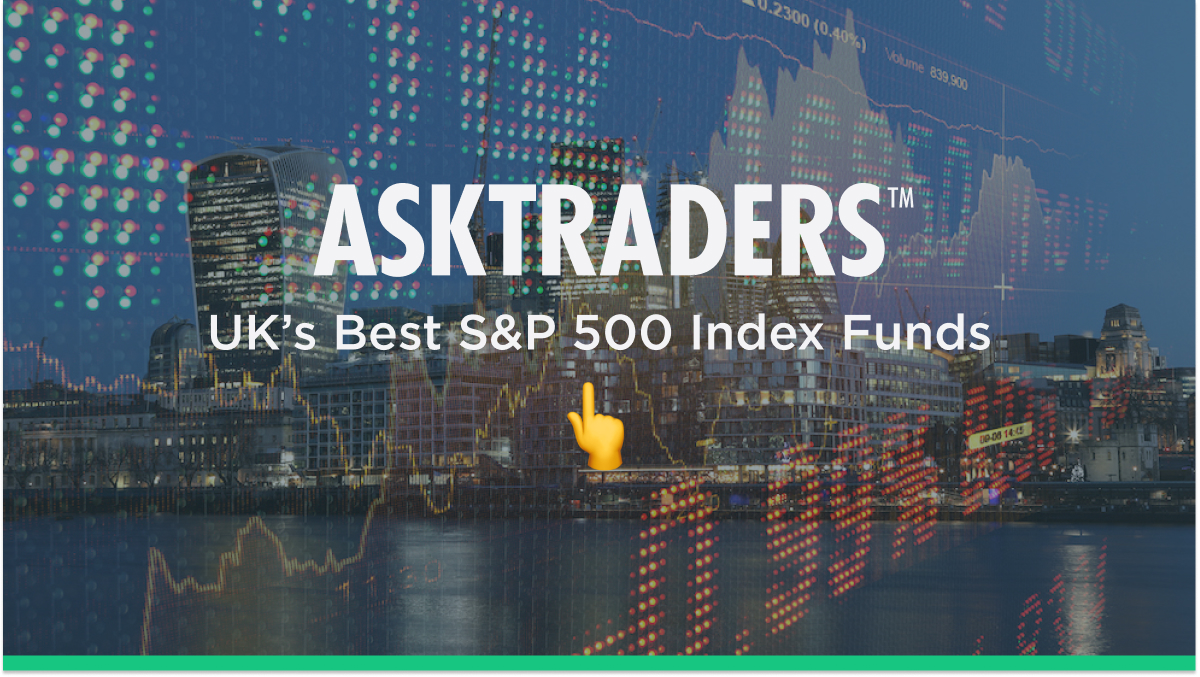The S&P 500 is a stock market index that tracks the performance of the 500 leading US companies. It has long been a cornerstone of investment portfolios due to its broad diversification and historical track record of growth, making it an attractive option for investors around the world seeking long-term exposure to the US equity market.
YOUR CAPITAL IS AT RISK

Over the years, for UK investors, gaining access to the S&P 500 has become increasingly convenient and cost-effective through the rise of index ETFs (Exchange Traded Funds).
These are low-cost, user-friendly instruments, and some S&P 500 index tracker funds can be bought in GBP share class form to avoid currency market complications. Analysis of the best S&P 500 index funds for UK investors reveals a list of funds that could offer relatively stable returns.
The Best S&P 500 Index Funds For UK Investors
- Vanguard S&P 500 UCITS ETF – GBP (VUSA)
- Xtrackers S&P 500 UCITS ETF 2C – GBP Hedged (XDPG)
- iShares Core S&P 500 UCITS ETF GBP Hedged (GSPX)
How the Funds Were Chosen
- All three have low expense ratios of 0.1% or lower.
- Two of the funds have significant AUM at £30bn or more.
- The funds are tailored to UK investors.
Vanguard S&P 500 UCITS ETF – GBP (VUSA)
The Vanguard S&P 500 UCITS ETF – GBP (VUSA) tracks the performance of the S&P 500 index and is denominated in GBP. It was first listed in 2012 and being an Irish UCITS type of investment product means it can form part of an ISA investment portfolio. The way this S&P tracker fund is tailored to UK investors doesn’t mean it moves away from its main aim of investing in the largest company stocks listed in the US.
The fund has an expense ratio of 0.07%. Vanguard has a reputation for offering low-cost trading and that expense ratio rate means that for every £10,000 invested, only £7 per year is lost to fund management expenses.
Xtrackers S&P 500 UCITS ETF 2C – GBP Hedged (XDPG)
London-based firm DWS Investments UK Limited offers its Xtrackers S&P 500 UCITS ETF 2C – GBP Hedged fund to UK investors looking to buy the S&P index in sterling. It has been in operation since 2015 and is domiciled in Ireland, so falls under the regulatory umbrella of the Central Bank of Ireland. The fund is listed on the London Stock Exchange under ticker XDPG but aims to track the performance of the S&P index, so it focuses on US stocks.
The total expense ratio is 0.09%, which is marginally higher than the Vanguard equivalent. In cash terms, that difference amounts to £2 more per year being allocated to management charges on investments of £10,000.
ISHARES Core S&P 500 UCITS ETF GBP Hedged (GSPX)
The iShares Core S&P 500 index ETF with GBP hedging is one of the range of funds offered by BlackRock Inc. It is registered in Ireland, has appointed State Street as fund Administrator, is regulated by the Central Bank of Ireland, and has a listing on the London Stock Exchange under ticker GSPX.
The pedigree of the fund manager, BlackRock, is one appealing feature of the fund. There’s additional security for investors when they sign up with what is arguably the largest investment manager in the world. Another factor that will attract long-term UK investors is that the product can be held in tax-efficient ‘wrappers’ such as a SIPP.
The expense ratio is 0.1%.
Why Are S&P 500 Index Funds So Popular?
At AskTraders, we’ve previously provided a detailed breakdown of how the S&P index was created and how it operates. However, the most important feature of the index and part of the reason why it can be considered so popular to UK investors ,is its ability to spread risk and exposure across a large number of the largest firms in the world.
The S&P 500 Index includes multinationals such as Apple Inc, Microsoft Corp and Tesla Inc, and some smaller firms that aren’t household names outside of the US. Diversifying investment across a large number of firms allows investors to catch the upside from large-cap firms, which offer stability, and growth stocks, which offer greater risk-return. It also hedges against the risk of a single stock pick going wrong.
The firms that make up the S&P index are listed on Tier-1 US exchanges such as the New York Stock Exchange and NASDAQ Exchange, but they are also outward-looking – many have global operations that have a track record of generating consistent revenues.
The way that S&P index funds spread risk doesn’t result in investors having to sacrifice returns.
S&P 500 index funds are also highly transparent. While it’s made up of 500 different firms, it’s still possible to dig into the details to find the key metrics that are used in the fundamental analysis favoured by long-term investors.
Advantages of ETF Tracker Funds
ETF tracker funds and ETFs, in general, are typically associated with relatively low management costs.
The expense ratio of S&P ETFs is usually even lower, thanks to the underlying instruments being highly liquid stocks with tight bid-offer spreads.
Index tracker funds invest in a large number of securities, helping with diversification and helping to reduce risk, as the overall performance of the fund is not dependent on the performance of any single security.
Index tracker funds provide predictable and consistent returns as they are designed to mirror the performance of the market index they track.
What to Consider When Investing in UK S&P Tracker Funds
One feature for UK investors in S&P tracker funds to consider is currency risk, as the index and its members are denominated in US dollars, movements in the forex markets can influence returns as much as changes to stock prices.
To mitigate the currency risk and reduce barriers to entry for UK S&P index investors, some fund managers have set up products that are GBP denominated. There’s no need to convert sterling into dollars, instead, the fund manager does the background work required so that deposits and withdrawals are all sterling based.










